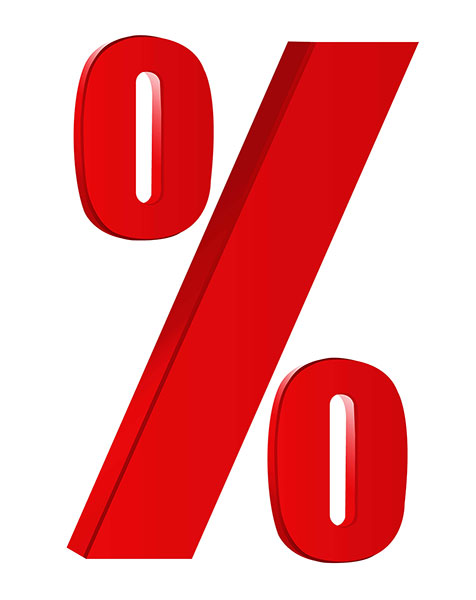Intro to "Calculate the Annual Effective Rate of your Prompt Payment Discount"
Try the calculator Calculate the Annual Effective Rate of your Prompt Payment Discount >
 If you are able to get a discount by paying your supplier earlier, do you hesitate in doing so? It is always wise to annualize the rate of your prompt payment discount in order to evaluate your opportunity cost.
If you are able to get a discount by paying your supplier earlier, do you hesitate in doing so? It is always wise to annualize the rate of your prompt payment discount in order to evaluate your opportunity cost.
A prompt payment discount is an opportunity to invest in a company by injecting an amount of money into it prematurely, in order to get a return: the discount. However, this investment could deprive other areas of the business. Annualizing the prompt-pay rate will help you compare its return with your weighted average cost of capital, allowing you to find out whether it's more profitable to invest in the discount allowance or elsewhere in the business.
On the other hand, the grace period offered by suppliers for the amount owed to them is a source of financing. You could skip the discount allowance and pay the vendor later; offering you another source of financing than banks. However, by taking advantage of your grace period you will not have access to your discount and will end up paying a surplus, which is a cost comparable to interest payable on a loan. It is therefore important to compare the supplier's grace period cost to the banks interest costs in order to see if it's worth it for you to borrow from the supplier. The annual rate of return on investment or annual cost of interest is the same calculation.
The sales terms on an invoice are expressed with a rate and a delay, such as "2% 10 days net 30 days". In this example, you have access to a 2% discount if you pay in 10 days (prompt payment discount), or else you have to pay the total invoice in 30 days (grace period). In terms of an investment, this offers you a return of 2.04% for an amount invested 20 days earlier. In terms of a credit, this means that you pay more than 2.04% interest for a loan of 20 days if you skip the early payment discount. It is then interesting to annualize the discount rate and compare it with other possible investments in the business, or interest rates offered by banks.
In the example seen below, the sales term "2% 10 days net 30 days" gives an annualized rate of 36.7% and an effective annual rate of 43.9% if the interests are capitalized every 20 days throughout the whole year.
Note: example with $100.00 and 2% 10 days net 30 days:
| $100.00 - 2% discount = $98.00 |
| $100.00 / $98.00 -1 = 2.04% for 20 days (30 days - 10 days) |
| Annual : 2.04% * 360/20 = 36.7% |
If your objective is to optimize your investment in your business, an annual discount rate higher than your weighted average cost of capital means it is a good opportunity since the discount ends up being more profitable than investing in another sector of the business. On the other hand, a lower discount annual rate shows that it is better to invest elsewhere in the company, in sectors that would give you a better return. The annualized rate of 36.7% in our example shows a great rate of return, demonstrating that the discount is a good option.
If you are looking to optimize your financing, and the annual interest rate from the supplier's credit is higher than what banks offer, then it would be preferable to borrow from banks instead. You would be able to pay the supplier early, get the discount and ultimately avoid the suppliers' high interest costs. If it is the opposite, and the banks' interest is higher, then your supplier would be a better pick for financing than the bank, so the prompt payment discount might not be the optimal option. In our example, 36.7%, being normally a high interest rate from which to borrow, shows that it would be better to take the prompt payment discount and borrow from the bank instead.
No matter what your priority is, whether it's optimizing your return on investment or reducing to a maximum your cost of financing, choosing between taking the prompt payment or taking advantage of the grace period requires the same calculation. In our example, 36.7% is a great return on investment and also a high loan interest rate, so taking the discount, and even borrowing at a cost to do so, satisfies both objectives. On one hand, you inject money prematurely in your business at a rate of return of 36.7% and on the other hand you avoid borrowing at a cost of 36.7%. You can annualize the discount annual rate from your supplier by using this calculator and then judge your opportunity.
Try the calculator Calculate the Annual Effective Rate of your Prompt Payment Discount >




